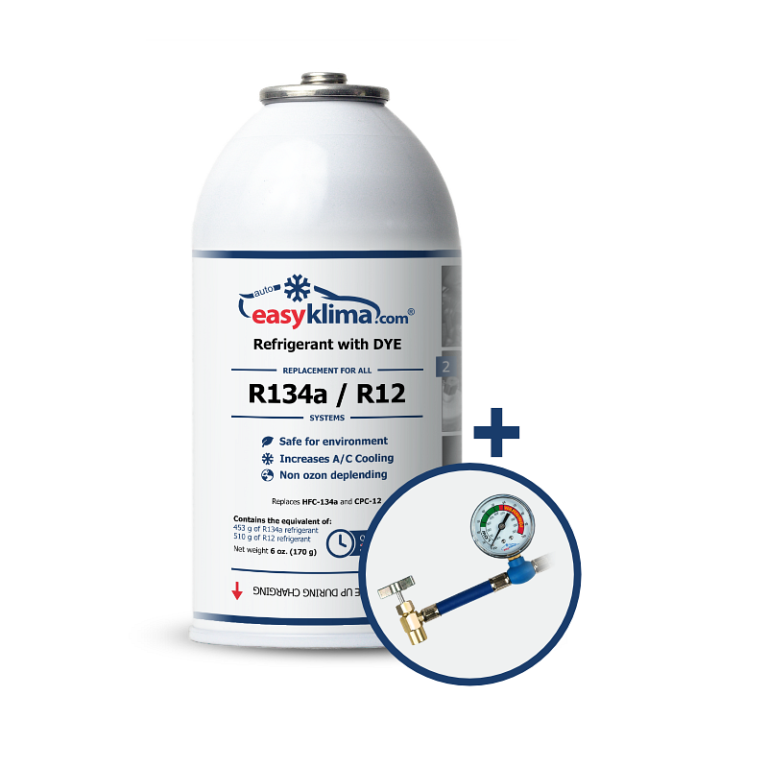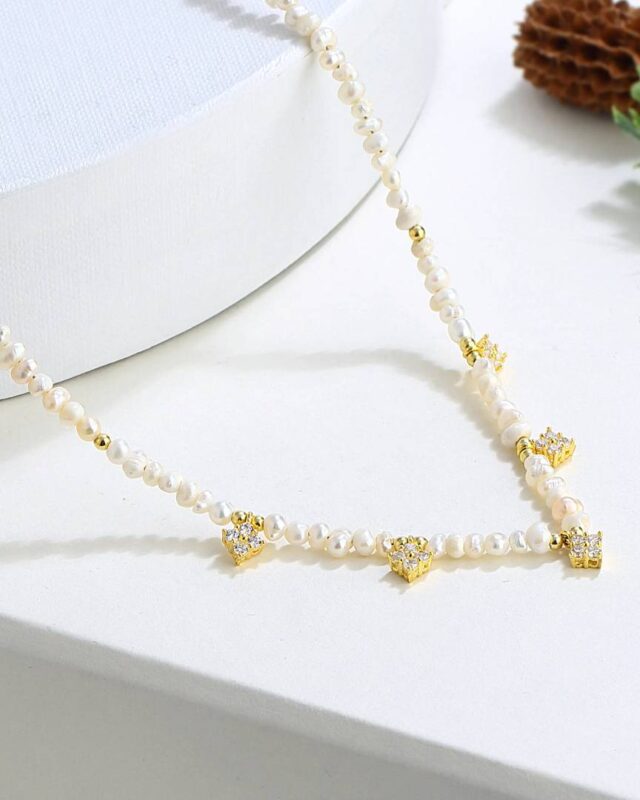Tattooing blood type has gained significant popularity in recent years due to its potential life-saving implications. Knowing a person’s blood type can be crucial in emergency situations, allowing medical professionals to administer the appropriate blood transfusion without delay. While traditional methods of carrying this information involve medical cards or bracelets, individuals are increasingly opting for a more permanent solution—tattooing their blood type directly on their bodies. Determining the optimal placement for a blood type tattoo requires careful consideration. The chosen location should balance visibility and practicality, ensuring that medical personnel can easily identify the blood type in urgent situations. Several areas of the body are commonly recommended for blood type tattoos, each with its own advantages and considerations.
- Inner Forearm:
The inner forearm is a popular choice for blood type tattoos due to its visibility and accessibility. This area offers a flat surface that allows for clear and legible tattooing, ensuring that the blood type is easily identifiable. Moreover, the inner forearm is less prone to distortion or stretching, making the tattoo more readable over time. - Upper Arm:
Tattooing the blood type on the upper arm provides a visible location while allowing for a larger tattoo design. This area is often chosen by individuals who desire a more discreet option, as the blood type can be easily covered with clothing. However, it is essential to ensure that the tattoo is placed in a location that is readily visible when necessary. - Wrist:
The wrist is another commonly selected area for blood type tattoos. It offers visibility and convenience, as it is easily visible both to the wearer and to medical professionals. Additionally, the wrist allows for a smaller tattoo size, ideal for those seeking a more subtle placement option. However, it is important to note that tattoos on the wrist may be subject to fading over time due to frequent exposure to sunlight and everyday activities. - Chest:
For individuals who prefer a more discreet placement, the chest provides a suitable option. Blood type tattoos on the chest can be positioned near the collarbone or on the upper chest, offering visibility when needed while remaining hidden under clothing in everyday situations. It is crucial to consider the potential distortion of the tattoo due to factors such as aging, weight fluctuations, or breast augmentation in the case of female individuals. - Ankle:
While less common, tattooing the blood type on the ankle is an option chosen by some individuals. This placement offers a level of discretion, as the tattoo can be easily concealed by socks or footwear. However, it is important to consider that ankle tattoos may be more prone to distortion over time, especially if the individual frequently wears shoes that rub against the area.
When deciding on the placement of a blood type tattoo, it is advisable to consult with a professional tattoo artist experienced in medical identification tattoos. They can provide valuable insights based on their expertise and knowledge of how tattoos age and interact with different body parts. Additionally, ensure that the tattoo is clearly and accurately labeled with the blood type and is easily legible. In conclusion, tattooing your blood type can serve as a potentially life-saving measure in emergency situations. When considering where to place the tattoo, factors such as visibility, practicality, and long-term legibility should be taken into account. Whether it is the inner forearm, upper arm, wrist, chest, or ankle, the chosen location should strike a balance between accessibility and personal preference. By carefully selecting the placement of your blood type tattoo, you can ensure that vital medical information is readily available when it matters most.
Can I Tattoo My Blood Type on My Body? Explore the Possibilities
In recent years, tattoos have become increasingly popular as a means of self-expression and personal identification. People are now exploring new and creative ways to make their tattoos not only aesthetically pleasing but also informative and practical. One intriguing idea that has gained attention is the concept of tattooing one’s blood type onto their body. This unique approach raises the question: Can I tattoo my blood type on my body? Let’s delve into this topic and explore the possibilities. To answer this question, it is important to consider both the technical aspects of tattooing and the medical implications of displaying one’s blood type. Tattooing involves the insertion of ink into the dermis layer of the skin using a needle.
Traditionally, tattoos have been used for artistic purposes, but their potential for conveying vital information opens up a realm of possibilities. When it comes to blood types, there are four major categories: A, B, AB, and O. Each blood type carries specific antigens and antibodies that determine compatibility for blood transfusions. Displaying your blood type through a tattoo can provide crucial information in emergency situations where immediate access to your blood type can make a significant difference in your medical treatment. Now, let’s explore the possibilities of tattooing your blood type. The most common location for displaying blood type tattoos is the inner forearm. This placement offers several advantages. Firstly, the inner forearm is easily visible, allowing medical professionals to identify your blood type quickly. Secondly, it is an area with relatively thin skin and minimal tattoo fading over time, ensuring the longevity and legibility of the tattoo. Additionally, the inner forearm is less sensitive compared to other body parts, making the tattooing process more bearable. When considering the design of a blood type tattoo, simplicity and clarity are key. Opting for clear, bold lettering and symbols enhances readability, especially in urgent situations.
Including the universal symbol for blood types, such as the letter “A,” “B,” “AB,” or “O” enclosed in a circle, can further enhance recognition and comprehension. It is vital to consult with a professional tattoo artist experienced in lettering and small-scale designs to ensure the tattoo is executed accurately and precisely. While the concept of tattooing blood types on the body offers potential benefits, it is essential to approach this idea with caution and consult with medical professionals. Tattooing carries certain risks, such as infection or adverse reactions, which may complicate medical conditions or interfere with blood tests. Therefore, it is crucial to have an open and honest discussion with your healthcare provider to weigh the potential advantages against any associated risks. In conclusion, the idea of tattooing one’s blood type on the body presents intriguing possibilities. Not only does it provide an innovative way of self-identification, but it also has the potential to assist medical professionals in emergency situations. The inner forearm serves as an ideal location for such tattoos due to visibility, durability, and minimal discomfort during the tattooing process. However, it is crucial to approach this concept responsibly and consult with medical professionals to ensure compatibility with your specific health needs. By exploring the possibilities of blood type tattoos, we can continue to push the boundaries of self-expression while prioritizing our well-being and safety.

Find the Best Locations for Blood Type Tattoos: Aesthetic and Practical Considerations
When it comes to expressing one’s individuality and ensuring personal safety, blood type tattoos have gained popularity in recent years. These tattoos serve as a concise and easily accessible medical identifier, providing crucial information in case of emergencies. However, selecting the optimal location for a blood type tattoo requires careful consideration of both aesthetic and practical factors. In this comprehensive guide, we will explore the various aspects to help you find the best locations for your blood type tattoo. Aesthetic considerations play a significant role in the placement of any tattoo, including blood type tattoos. Many individuals prefer discreet placements that can be easily concealed, especially in professional or formal settings. The inner forearm is a popular choice for its visibility when needed yet can be easily hidden under long sleeves.
Additionally, the wrist area, ankle, or behind the ear can offer a subtler placement option. For those seeking a bolder statement, the upper arm or shoulder blade region allows for more prominent and visually striking blood type tattoos. These locations provide a larger canvas for intricate designs and can be showcased or concealed as desired. Some individuals even choose to incorporate their blood type tattoos into larger compositions, such as sleeve tattoos or back pieces, creating a cohesive and visually appealing body art. Practical considerations should also guide the selection of the ideal location for a blood type tattoo. The primary purpose of such a tattoo is to facilitate quick and accurate identification in emergency situations. Therefore, visibility and accessibility are crucial factors to ensure that medical professionals and first responders can readily identify your blood type. Placing the tattoo on the outer forearm, where it is easily visible and accessible, can significantly enhance its practicality.
Furthermore, the upper chest area, near the collarbone, is another practical location for blood type tattoos. This placement offers both visibility and proximity to vital organs, enabling medical personnel to quickly access the information they need. Similarly, the back of the hand or the palm can be effective locations, as they are readily visible and easily identifiable during medical examinations or procedures. In addition to the aesthetic and practical considerations, it’s essential to consider the individual’s pain tolerance and personal preferences. Certain areas of the body, such as the ribs or the top of the foot, are known to be more sensitive to tattooing. If pain sensitivity is a concern, it may be advisable to opt for less sensitive areas like the upper arm or thigh. Ultimately, the choice of location for a blood type tattoo should align with an individual’s unique preferences and circumstances. It is crucial to consult with a professional tattoo artist who can provide expert advice based on their experience and knowledge of anatomical considerations. They can help determine the best placement for both aesthetics and practicality, taking into account factors such as skin texture, body shape, and existing tattoos. Remember, a blood type tattoo serves not only as a personal expression but also as a potentially life-saving identifier. By carefully evaluating aesthetic and practical considerations, you can find the optimal location for your blood type tattoo that reflects your style while ensuring its effectiveness in critical situations.

What Are the Different Tattoo Designs for Blood Types? Get Inspired!
Tattoos have become a popular form of self-expression, allowing individuals to showcase their unique identities and beliefs. Beyond personal aesthetics, tattoos can also serve a practical purpose, such as displaying important medical information like blood types. In this comprehensive guide, we delve into the world of tattoo designs specifically created for different blood types. Whether you’re seeking inspiration or considering getting a blood type tattoo, this article will explore various designs that can inspire you.
- The O Rh- Design:
Individuals with O Rh- blood type possess a universal blood donor type. Their tattoos often incorporate symbols associated with life and vitality, such as a vibrant red drop of blood or a stylized heart. Other designs may feature an abstract representation of the O negative sign, symbolizing the rare and valuable nature of their blood. - The O Rh+ Design:
O Rh+ individuals also have a universal blood donor type. Tattoos for this blood type often highlight the positive nature of their compatibility. A popular design is a red cross encompassed by the letter “O,” representing their willingness to help others in need. Some variations may incorporate other elements, like a halo or angel wings, symbolizing their life-saving potential. - The A Rh- Design:
A Rh- individuals possess a unique blood type that can be represented through various tattoo designs. One common design features a stylized letter “A” infused with a serpent, symbolizing wisdom and healing. Another option is to incorporate a medical caduceus intertwined with the letter “A,” representing the connection between medicine and blood donation. - The A Rh+ Design:
Tattoos for individuals with A Rh+ blood type often incorporate elements that represent altruism and compassion. A popular design choice is an intertwined red heart and letter “A,” symbolizing their loving and giving nature. Some may opt for a tattoo featuring a blooming flower, highlighting growth and renewal, and representing the life-enhancing potential of blood donation. - The B Rh- Design:
B Rh- individuals have a unique blood type that can inspire distinctive tattoo designs. A common choice is a tattoo combining the letter “B” with a mythological creature, such as a phoenix or dragon, symbolizing rebirth and strength. Alternatively, a design incorporating a tree with roots reaching deep into the earth can signify their grounding nature and connection to life. - The B Rh+ Design:
Tattoos for B Rh+ individuals often emphasize their compatibility and their ability to contribute to the blood supply. A popular design choice is a tattoo featuring a red droplet within the letter “B,” symbolizing the life-giving properties of their blood. Additionally, some individuals may opt for a design incorporating a balanced scale, representing harmony and the importance of blood donation. - The AB Rh- Design:
Individuals with AB Rh- blood type possess a unique and rare blood type, making their tattoos truly distinctive. Designs for this blood type often incorporate elements that symbolize duality and balance. One option is a tattoo featuring the letters “AB” intertwined with the Yin and Yang symbol, representing the harmonious nature of their blood. Another design choice could include a stylized DNA helix, symbolizing their genetic uniqueness. - The AB Rh+ Design:
AB Rh+ individuals have a blood type that combines the characteristics of A and B blood types. Tattoo designs for this blood type often represent versatility and adaptability. One popular choice is a tattoo featuring a chameleon, symbolizing their ability to seamlessly fit into various situations. Another design option could incorporate a cosmic motif, representing their expansive and universal compatibility.

How to Choose the Right Tattoo Artist for Your Blood Type Tattoo
Choosing the right tattoo artist is crucial when it comes to getting a blood type tattoo. This type of tattoo holds significant importance as it provides vital medical information in case of emergencies. To ensure the utmost precision, expertise, and professionalism in getting your blood type tattooed, it is imperative to follow a careful selection process when choosing a tattoo artist. In this comprehensive guide, we will explore the key factors to consider in selecting the ideal tattoo artist for your blood type tattoo.
- Expertise in Medical Tattoos:
When it comes to blood type tattoos, it is essential to find a tattoo artist who specializes in medical tattoos. These artists possess in-depth knowledge of medical symbols, font styles, and placement techniques required for accurate blood type representation. Look for an artist who has a portfolio showcasing previous medical tattoos, demonstrating their experience and proficiency in this specific domain. - Hygiene and Sterilization Practices:
Maintaining high standards of hygiene and sterilization is paramount in any tattoo procedure, particularly for blood type tattoos that serve a functional purpose. A reputable tattoo artist should strictly adhere to proper sterilization techniques, including the use of single-use needles, sterilized equipment, and a clean working environment. Ensure that the artist follows industry-standard hygiene protocols to minimize the risk of infection and ensure a safe tattooing experience. - Skill in Typography and Symbolism:
Blood type tattoos typically involve specific fonts and symbols to represent different blood types accurately. An adept tattoo artist should possess a keen eye for typography and symbolism, ensuring that the chosen font is legible and the symbol is clear and recognizable. A skilled artist will be able to customize the design according to your preferences while maintaining the essential elements required for accurate blood type identification. - Communication and Consultation:
A professional tattoo artist should be approachable and open to communication. Before committing to the procedure, schedule a consultation to discuss your requirements and expectations. This interaction will allow you to assess the artist’s willingness to listen, provide insights, and offer suggestions based on their expertise. Effective communication ensures that both you and the artist are on the same page regarding the design, size, placement, and overall outcome of your blood type tattoo. - Reputation and Recommendations:
Researching the reputation and recommendations of a tattoo artist is crucial. Explore online reviews, testimonials, and ratings on reputable platforms to gauge the experiences of previous clients. Personal recommendations from friends, family, or acquaintances who have had blood type tattoos can also be invaluable in finding a reliable and skilled tattoo artist. A positive reputation indicates a track record of client satisfaction and increases the likelihood of a successful tattooing experience. - Portfolio Assessment:
A tattoo artist’s portfolio serves as a visual representation of their skills, artistic style, and attention to detail. When evaluating potential artists for your blood type tattoo, thoroughly examine their portfolio. Pay close attention to the quality and precision of their previous works, specifically focusing on fine lines, small text, and intricate designs. Assessing their portfolio will give you a better understanding of the artist’s capabilities and whether they align with your expectations.
Remember, getting a blood type tattoo is a decision that should not be taken lightly. By considering the factors mentioned above, you can ensure that you choose the right tattoo artist who possesses the necessary expertise, technical skills, and professionalism to create a blood type tattoo that is both aesthetically pleasing and accurately represents your medical information. In conclusion, selecting the right tattoo artist for your blood type tattoo requires careful consideration of their expertise in medical tattoos, adherence to hygiene practices, skill in typography and symbolism, effective communication, reputation, and portfolio assessment. By conducting thorough research and following these guidelines, you can find a proficient tattoo artist who will provide you with a blood type tattoo that meets your expectations while ensuring your medical information is accurately represented and visually appealing. Remember, your blood type tattoo serves as a crucial identifier in emergency situations, making it vital to choose a tattoo artist who understands the significance of this unique tattoo and can execute it with precision and professionalism.

Are There Any Health Risks Associated with Blood Type Tattoos? Consult an Expert
Blood type tattoos have gained popularity in recent years as a means of conveying important medical information in case of emergencies. These tattoos typically display a person’s blood type, allowing medical professionals to quickly identify and administer the appropriate treatment during critical situations. While blood type tattoos can be helpful, it is essential to consider the potential health risks associated with getting such a tattoo. It is highly recommended to consult with a medical professional or tattoo expert before proceeding with this type of body modification.
One potential health risk associated with blood type tattoos is the risk of infection. Like any other tattoo, the process involves puncturing the skin, which can introduce bacteria or other pathogens. If the tattoo equipment or environment is not properly sterilized, there is a higher chance of developing an infection. Infections can lead to complications such as redness, swelling, pain, and in severe cases, systemic infections that require medical intervention. Therefore, it is crucial to ensure that the tattoo artist follows strict hygiene practices and uses sterile equipment. Another consideration is the risk of allergic reactions. Tattoo pigments contain various chemicals and metals that can cause allergic reactions in some individuals. These reactions may range from mild irritation to more severe symptoms such as itching, swelling, and even anaphylaxis. It is important to discuss any known allergies or sensitivities with both the tattoo artist and a healthcare professional before getting a blood type tattoo. They can provide guidance on the potential risks and suggest alternative methods or materials to minimize the chances of an allergic reaction.
Additionally, the placement of the blood type tattoo can impact its potential health risks. Certain areas of the body, such as the hands, feet, or joints, may be more prone to complications due to the constant movement and exposure to friction. The healing process may be slower in these areas, increasing the risk of infection or delayed wound healing. Choosing a suitable location for the blood type tattoo, in consultation with a tattoo artist or medical professional, can help mitigate these risks. Furthermore, it is crucial to consider the long-term implications of a blood type tattoo. Over time, tattoos can fade, blur, or change in appearance. This may affect the legibility and accuracy of the blood type information. Regular follow-up appointments with a tattoo artist can help assess the condition of the tattoo and make any necessary touch-ups or modifications to maintain its readability. In conclusion, while blood type tattoos can be a helpful way to communicate critical medical information, it is important to be aware of the potential health risks associated with them. Infections, allergic reactions, and location-related complications are among the factors to consider. Consulting with a medical professional or tattoo expert can provide valuable insights and guidance regarding the safest approach to getting a blood type tattoo. Prioritizing proper hygiene, discussing allergies, and selecting an appropriate placement can help minimize potential risks. Always remember to prioritize your health and consult experts before making any decisions regarding tattoos and their potential implications.






















+ There are no comments
Add yours